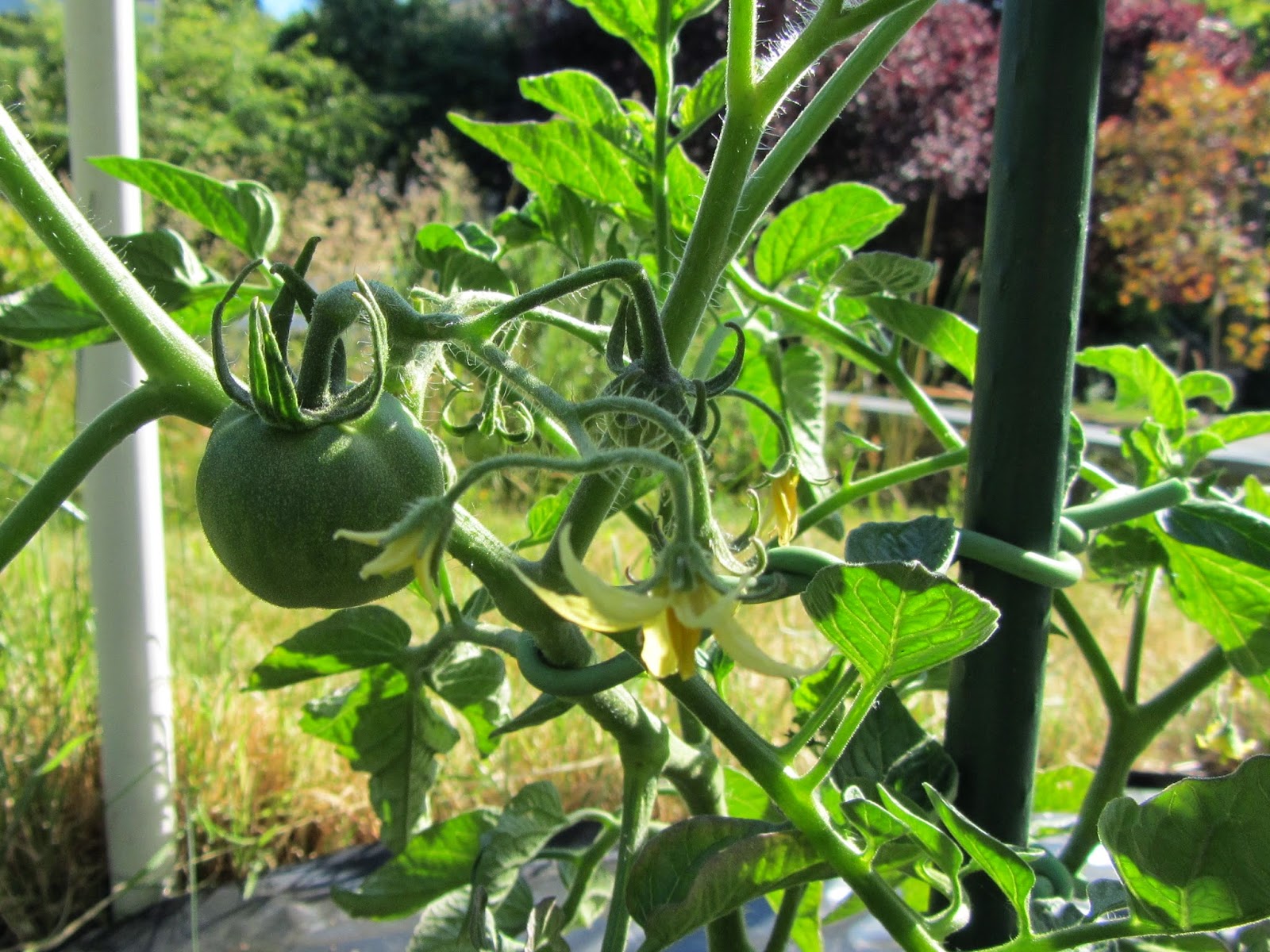On July 10th I planted the last of the seedlings, putting two each of the Big Isis Candy and Mini Cherokee Purple in the second tomato bed. The plants were about 12-15" tall, so I buried the roots and most of the stem in a shallow trench angled up, so only about 6" was above ground. I also planted one seedling each of Spudakee and Black and Red Boar, but they were only about 6" tall, so only their rootballs were buried leaving 5-6" above ground. I added a sprinkling of Mycorrhizal Fungi to the roots of each plant then fertilized with Tomato-tone and watered deeply.
By July 7th all 15 plants planted in early June had set fruit, over 121 total not counting the 100+ fruit on the Sungold. By July 16th, they had set 221 fruit, again not counting the fruit on Sungold. Sun Sugar had set the second highest number with 52 fruit, still way behind Sungold. While the earliest fruit on Sungold started blushing by June 25th, the earliest fruit on Sun Sugar did not start blushing until July 16th. The flavor was very sweet, similar to Sungold's. Both plants were planted from 1 gallon containers, but the Sungold gets several more hours of sun compared to the Sun Sugar. Even tomatoes believe in location, location, location!
Fruit on Sun Sugar blushing on July 16th
Matt's Wild Cherry and Chadwick had the next highest fruit set by July 16th, with 30 and 29 fruit respectively. Matt's Wild Cherry were already red-orange by July 16th while the earliest fruit on Chadwick did not start blushing until July 28th. The tiny 0.1 oz. (1/2" in diameter) Matt's fruit were delicious, with a very strong tomatoey flavor, while the 0.7-0.8 oz. Chadwick fruit had a much milder, somewhat acidic flavor. I will definitely save seed and grow the Matt's Wild Cherry in the future. However, unless the Chadwick's flavor improves later in the season, it will not be making my short list for next year.
Fruit ripening on Matt's Wild Cherry by July 16th
Fruit on Chadwick started blushing on July 28th
The next most prolific plant, with 23 fruit set by July 16th, was supposed to be Japanese Trifele Black. However, the fruit forming did not have the characteristic pear shape of JTB, so I suspected it was something else. In any case, it is definitely an extra early variety since it started blushing on July 16th.
Fruit on the Not JTB started blushing on July 16th
By July 28th more fruit had also begun blushing and ripening on the Not JTB
Most of the Not JTB fruit have a starburst pattern on the blossom end, so it might be Glacier. Many images of Glacier show a similar starburst pattern. I've never grown Glacier before, but I grew Kimberley in 2012, and the fruit on Kimberley are not quite as round and usually have a pointy edge. Of course, that was in 2012 when we had a much colder summer, so the pointy end may have been a product of the cold weather. In any case the Not JTB flavor was very similar to the mild flavor of the Chadwick and the Kimberley I grew in 2012.
Of the other cherry varieties, Black Cherry and Isis Candy had only set 12 and 10 fruit, respectively, by July 16th. The earliest fruit on Black Cherry started blushing by July 25th, but the Isis Candy still had no fruit blushing by the end of the month.
Of the larger varieties the Jet Star had set the most fruit, 17 fruit by July 25th. The largest fruit were about 4-4.5" in diameter, and the earliest fruit started blushing by late July.
The earliest 4" fruit started blushing on Jet Star on July 28th
By July 16th the three Cherokee Purple plants had set 7, 9, and 11 fruit, respectively, while the two Paul Robeson plants had set 10 and 3 fruit, respectively, by July 16th.
The largest fruit on Cherokee Purple were about 2.5-3" in diameter by July 16th





























































